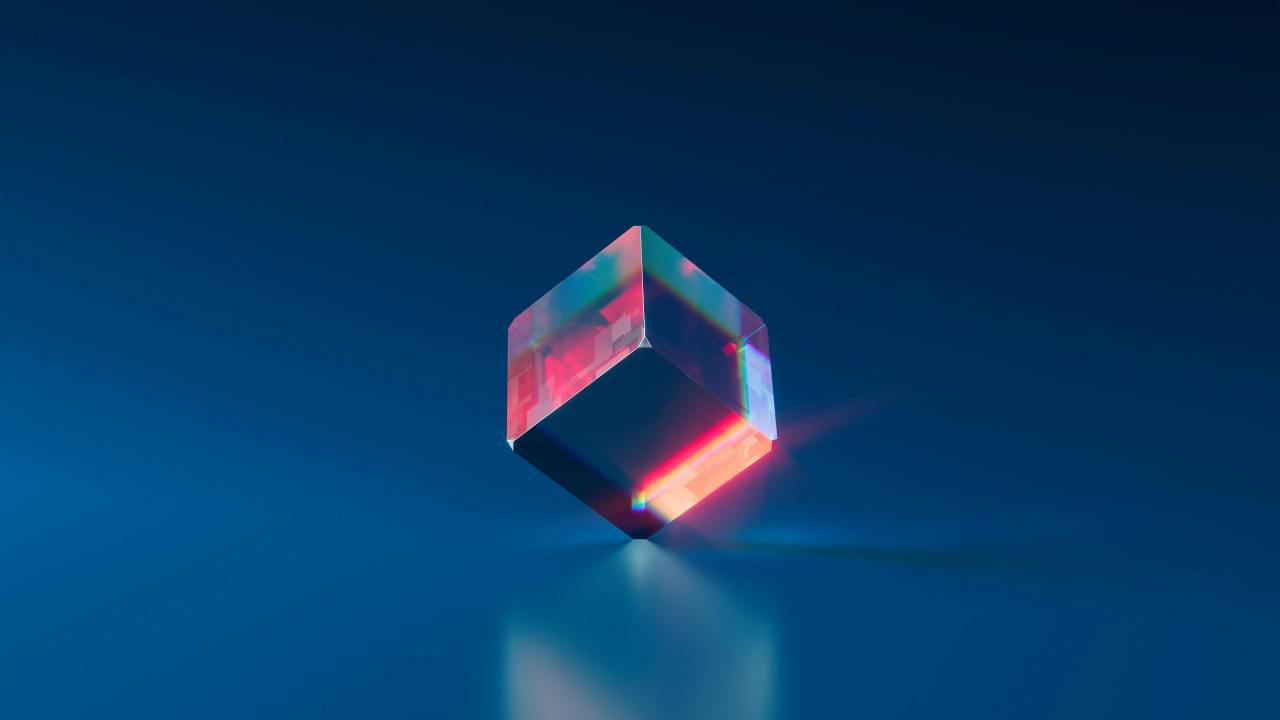
Reveal Your Subconcious Desires With The Cube Personality Test
Have you ever wondered what a map of your innermost desires might look like?
Personality assessments like the ‘Cube Personality Test’ are a fun way to guide your mind and reflect upon what your truest wishes are.
What is a Personality Test?
Personality tests were created to help psychologically categorize one’s personality traits, behaviors, and motivations. The purpose behind these categorizations is to showcase how one perceives the world and cares to interact with it.
There are two common types of personality tests:
- Objective Tests: Tests such as the Myers-Briggs Type Indicator (MBTI) or The Love Language Quiz are objective as they rely on self-indicated answers.
- Projective Tests: Tests such as the Rorschach Inkblot Test (or the Cube Personality Assessment you’re about to read more on), are projective because their reflections and answers are based on unconscious thoughts.
It’s important to note that personality tests are psychological tools and are often more reflective guides and practices rather than anything prescriptive.
What is the Cube Personality Test?
The Cube Personality Test is a projective visualization test that was created in the late 90s by author Isamu Saito and psychologist Tadahiko Nagao. This test was originally written about in the Kokology book series that coincided with a Japanese philosophical movement at the time. The Kokology cultural movement is linked to the procurement of various psychological visualizations that help people unlock profound insights about themselves— their fears, their goals, their relationships, etc.
Later on, international writer Annie Gottlieb brought certain visualizations, such as the Cube Personality Test, to Western audiences through her book Secrets of the Cube.
The Cube Personality Test leads its test taker to imagine a series of objects and hone in on the specific qualities of the objects they imagine. After their visualizations end, they are led to an answer key that helps them to evaluate their projections and unlock deeper truths about their inner worlds.
Begin: Cube Personality Test
Before you begin, it’s important to mention that this test has no right or wrong answers. Please interpret the prompts as you see fit and let your imagination wander.
Step 1:
In order to begin, close your eyes and picture you’re in a vast, open desert. Then, walk yourself through a series of objects, each appearing one after another:
- Cube
- Ladder
- Horse
- Storm
- Flowers
Step 2:
Now close your eyes again and evaluate the objects’ details more critically. Note your observations on the following questions:
- Cube: How big is it? What is it made of? Where is it located in the field? Is it transparent? Is the cube on the ground or is it in the air, floating?
- Ladder: How tall is the ladder? What is it made of? Where is the ladder in relation to the cube (nearby, far away, etc.)?
- Horse: What color is the horse? What is the horse doing in the desert? Where is the horse in relation to the cube?
- Storm: What does the storm look like? Is the storm going to last a while or just pass over? Where is the storm in relation to the cube?
- Flowers: What color are the flowers? How many flowers are there? What kind of flowers are they? Where are they located in the desert and in relation to your cube?
Step 3:
After noting your observations to the questions above, walk yourself through the answer key below. Reflect on what each object symbolizes and what your visualization of them signifies for your unique personality.
Answer Key: Cube Personality Test
Cube
The cube you visualized represents yourself— your ego, sense of identity, and current self-perception.
- Size: Represents your confidence and presence in the world (think large cube = boisterous, confident, loud, whereas small cube = soft spoken, introverted, shy).
- Material & Transparency: Represents your emotional availability and openness (think steel cube = guarded and harder to reach, whereas glass cube = vulnerable and open). Also, how solid the cube seems can reflect your security in yourself.
- Color: Represents your emotional tone (think optimism vs pessimism, etc.)
- Position: Represents your inclination towards practicality or spontaneity/creativity (think cube on ground = logical and practical, whereas cube in air = creative spirit, more free-flowing).
Ladder
The ladder you visualized represents your dreams and goals, along with how you plan to achieve them.
- Height: Represents the reach of your goals. Meaning a long ladder could signify high aspirations and lofty dreams, while a short one signifies more modest and accomplishable goals.
- Material: Represents your emotional tone in relation to your goals. Meaning a metal ladder could represent one who is determined beyond doubt to fulfill their dreams, whereas a wooden, rickety ladder could represent one who is more flexible with their aspirations or uncertain of their path.
- Location: Represents your ability to ask for help. If the ladder is leaning on or close to the cube, this signifies wanting to achieve your goals on your own, while a ladder far from the cube signifies your willingness to get a helping hand from others to achieve your dreams.
- Rungs: Broken or missing rungs can represent that you perceive obstacles along the path to pursuing and achieving your dreams.
Horse
The horse you visualized represents your emotional desires and relationships (often romantic ones).
- Color & Appearance: Represents your emotional nature in relationships and your openness to monogamy. A ‘color’ example could be a white horse being more calm in relationships, whereas a black horse being more mysterious. An ‘appearance’ example could be a bucking bronco representing someone who doesn’t care for monogamy and currently wants to roam free, while a gentle horse nibbling grass reflects one who is open to a relationship.
- Activity: Represents your level of independence, e.g., a galloping horse indicates someone who isn’t afraid to run free and be self-motivated. Meanwhile, a horse that is saddled and still can showcase one who is more dependent on their loved ones, or may even be emotionally stagnant.
- Location: Represents how important relationships are in your life. If the horse is close to the cube, relationships are central. If the horse is distant from the cube, relationships feel secondary or even hypothetically frightening to enter into.
It’s important that the horse can be interpreted in multiple ways. Meaning, it represents your romantic interests and relationships, but also how you care to give and receive love.
Storm
The storm you visualized represents your fears (internal conflicts) and struggles (external challenges).
- Appearance: Represents the depth of your fears. The more threatening the storm appears, the deeper-rooted your fears are, whereas a light rainstorm may indicate occasional passing worries or concerns. If you see a rainbow, this indicates hope for the future and emotional recovery.
- Duration: Represents the level of emotional turmoil you’re in. The longer the storm is projected to last, the deeper the turmoil feels. Meaning if it’s a quick shower, your stress and fear are fleeting emotions, whereas if the storm is long-lasting and heavy, your stress and fear are more consistent and far-reaching.
- Location: Represents how proximal you are to the turmoil in your life. If the storm is far away, you may recognize certain stressors or fears, but are not presently experiencing them. If the storm is over you, you may be currently in the weeds of some emotional distress.
Flowers
The flowers you visualized represent where you find joy and connection in your life.
- Appearance: The color and type of flower represent your emotional nature when it comes to connection. Vibrant flowers often symbolize extrovertedness and openness to friendship, whereas thorny or wilted flowers may signal that your walls are up. The health of the flowers and their coloring may also signify how nurtured you feel by the relationships in your life.
- Quantity: The amount of flowers you see represents how large you like your social circle to be. The larger the field of flowers, the more people you enjoy connecting with; meanwhile, one flower or a small patch of flowers indicates you enjoy a more intimate circle of friends.
- Location: Where the flowers are in relation to the cube represents your natural inclination toward introvertedness or extrovertedness to feel restoration and joy in your life. Meaning, if the flowers are close to the cube, your social circle is important to keeping your vitality and happiness up; you’re more extroverted. If the flowers are far from the cube, you prefer more time alone in order to rejuvenate your senses and feel happy.
Reflection
While this test is fun to take and reflect on, it’s good to remember that its accuracy varies and there are hundreds of ways to interpret your answers.
Rely on it as a fun reflective tool to address your current emotional landscape. Using each object as a prompt to further reflect or visualize your emotions can take this test a step further and help you unlock how you’re truly feeling in your life lately! All in all, have fun with it, don’t take it too seriously, and allow your interpretations to ebb and flow according to what feels right in your heart and gut.

